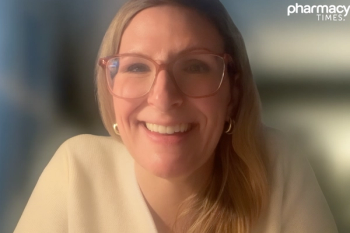
The Role of a Clinical Pharmacist in Melanoma Care and Education

Because of the likelihood that patients with melanoma will develop adverse effects on therapy, it is crucial for pharmacists to proactively educate patients and provide them with tools to help mitigate and manage these issues.
It is estimated that 99,780 people in the United States will be diagnosed with
Providers have estimated that more than 80% of patients experience adverse effects (AEs) while receiving combination immunotherapy for melanoma.2 Having close contact with the medical team is vital to not only preventing these AEs, but managing them as they arise.
Because of the likelihood that patients will develop AEs on therapy, it is crucial for pharmacists to proactively educate patients and provide them with tools to help mitigate and manage AEs, and clinically intervene when needed.
At
In addition, throughout therapy, ShieldsRx clinical pharmacists perform frequent patient assessments, provide ongoing medication management support, and when necessary, clinically intervenes with the patient’s provider to address any significant concerns.
Imagine that you are a patient newly diagnosed with melanoma, and your physician is starting you on a treatment drug. After the shock of the initial news settles, you likely will become overwhelmed by a plethora of new information from various sources regarding your treatment, some of which is not entirely accurate.
This deluge of multi-sourced unvetted complex information will likely confuse you and you may not know where to turn for accurate, useful advice on this subject. This is where the ShieldsRx team steps in.
After you receive your initial prescription, a pharmacy liaison will call you to gather your insurance information and determine whether there are any coverage barriers to accessing your treatment. Liaisons explore all available coverage options, including charitable grant funds, medication coupons, financial assistance programs, or any other funding sources to ensure you can access your treatment.
Once the ShieldsRx Liaison obtains affordable coverage for your treatment regimen, a ShieldsRx clinical pharmacist will perform a drug utilization review and confirm the selected treatment regimen is the most appropriate based on your specific factors and needs. Thereafter, the ShieldsRx clinical pharmacist will call you and review your regimen, educate you about known AEs, and provide you tools to appropriately manage them. These resources and support will help ensure you feel equipped to successfully begin treatment.
Throughout your treatment, a ShieldsRx clinical pharmacist will frequently communicate with you or your caregiver to monitor your treatment and ensure your therapy is progressing as anticipated. In addition to these ongoing patient assessments, ShieldsRx clinical pharmacists will monitor your laboratory reports along with any reports of complications or AEs and work with the oncology team to ensure the current regimen is safe and effective.
Although there are always support calls scheduled, we encourage patients to check-in and speak with a clinical pharmacist regarding concerns, questions, or guidance. Patients with melanoma often have a higher risk for infection, fatigue, and other factors that detrimentally impact daily life.
Having the ShieldsRx clinical team readily available to answer patient questions along with its proactive patient engagement creates frequent touchpoints that will provide greater visibility into any issues related to treatment. Indeed, the increased touchpoints enable the ShieldsRx team to detect concerns early giving increased visibility to concerning signals and trends that could indicate challenges or issues with the current treatment plan.
Continually educating and supporting patients not only at the start of therapy, but throughout the entire course, creates a treatment paradigm that allows for speedy and impactful clinical intervention. This will lead to better patient adherence and outcomes.
For instance, many medications used to treat other chronic conditions may increase a patient's risk for certain types of skin cancers, such as tacrolimus, upadacitinib (Rinvoq), and tofacitinib (Xeljanz). When a ShieldsRx clinical pharmacist encounters a patient on such a drug, they will review the associated risk and provide counseling and recommendations to mitigate any further risks. This includes such things as routine self-examinations, yearly dermatologist visits, use of SPF, and protective clothing.
Serving patients at risk for developing melanoma and other skin cancers provides ShieldsRx clinical pharmacists with a breadth of knowledge and experience unique to this industry. Staying up to date on current practices and recommendations coupled with collaboratively partnering with the on-site health care team provides the opportunity to share experiences and further the collective knowledge of the team on disease and medication management.
This collaborative environment ensures the selected plan of care is the most appropriate for the patient. Collaborative work, open communication, and clinical expertise allow the ShieldsRx team to put the patient first and provide legendary care to some of the most vulnerable patients.
References
1. Melanoma Statistics. Melanoma Research Alliance. Accessed April 25, 2022.
2. Advances in treatments changing outcomes for many melanoma patients. Cancer Treatment Centers of America. February 23, 2022. Accessed April 25, 2022.
Newsletter
Stay informed on drug updates, treatment guidelines, and pharmacy practice trends—subscribe to Pharmacy Times for weekly clinical insights.


















































































































































































































